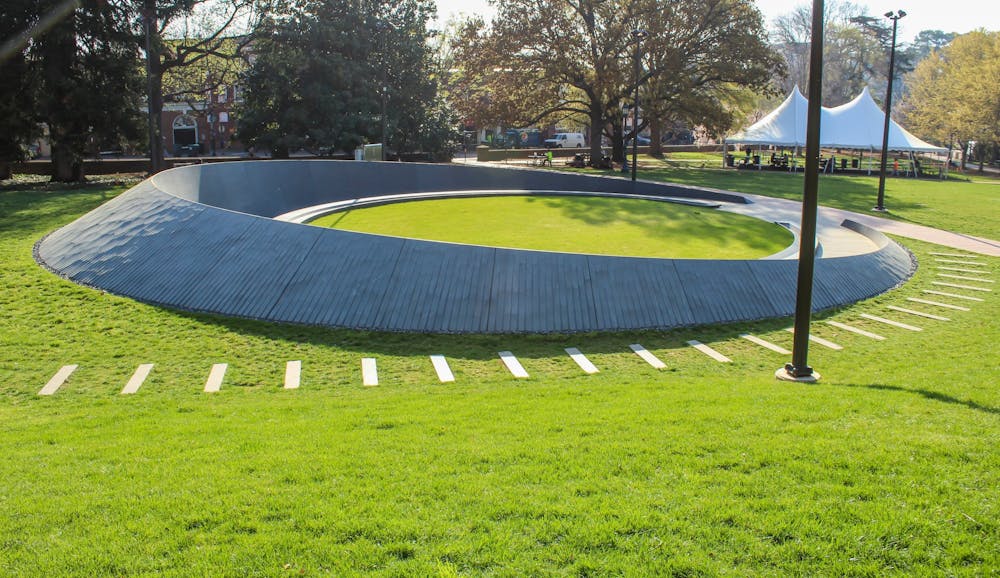Lea en español
A website accompanying the Memorial to Enslaved Laborers — a project which was conceptualized over a decade ago and completed in April of 2020 — is now available to the public. The website is maintained by the University’s Division for Diversity, Equity and Inclusion and provides information on the history of the University’s ties to enslavement, how and why the memorial was designed and how to visit and tour the memorial.
Between 1817 and 1865, an estimated 4,000 enslaved individuals lived, worked and built the University, from tilling earth to laying bricks and maintaining everyday operations of the University on Grounds.
Previously, the only recognition of these contributions was in the form of a plaque which recognized the enslaved laborers as individuals that “helped to realize Thomas Jefferson’s design for the University of Virginia.” The plaque has been critiqued for both its small size and location underneath the entrance to the Rotunda.
Before it was a physical memorial, MEL was a student group with the same name dedicated to the memory of enslaved laborers.In order to garner support for a physical memorialization of enslaved laborers, MEL and other student groups held marches and student forums. In 2013, the President's Commission on Slavery at the University was created and began designing the memorial in 2018 in conjunction with input from the Black Student Alliance, Student Council and the University and Community Action for Racial Equality.
Louis Nelson, professor of architectural history and the vice provost for academic outreach, was involved in the creation of the memorial and is a member of the President’s Commission on the University and Slavery.
“It was clear that the Memorial was coming close to opening [and] that we were going to need a website,” Nelson said. “[The] Memorial and website represent an institutional commitment to truth telling and honest engagement with the whole of our past, and the responsibility we have as an institution to engage with our communities.”
Nelson said the website began as a way to answer practical questions such as if the Memorial is ADA-accessible or what days it might be closed, but during the process it became clear to creators that the importance of telling the history and stories of the community was necessary.
“I think everybody should go to the Memorial and spend time [there] and [on] the website to better understand what this Memorial is and what it means for us as a community,” Nelson said.
Nelson recommends attending a self-guided tour if possible, and the website offers users opportunities to schedule a tour with a guide or descendant. Nelson noted they are sometimes “overwhelmed” with the volume of tour requests.
The new website explains the design of the memorial, which is intentional in every way — the inner wall of the memorial is gouged with thousands of “memory marks” representing the “genealogical cloud” of enslaved laborers who built the University.
Some of these marks have names above them — such as Isabella and William Gibbons, two enslaved laborers who built a family and achieved literacy, going on to become a teacher and minister, respectively. Other marks represent enslaved peoples whose names have been lost to history and are denoted by their relationship or skills, such as “mother,” “father” or “midwife.”
After its completion, the memorial was officially dedicated in a ceremony last April — a year after the original event was postponed due to COVID-19.
“The Memorial is a significant step in the University’s plans to embrace the story of the enslaved workers at U.Va. and to ensure it is told broadly across Grounds,” the website reads.
Users can also explore a timeline of the memorial’s creation and construction, resources for educators created by Education School students and information about the Descendants of Enslaved Communities at the University.





